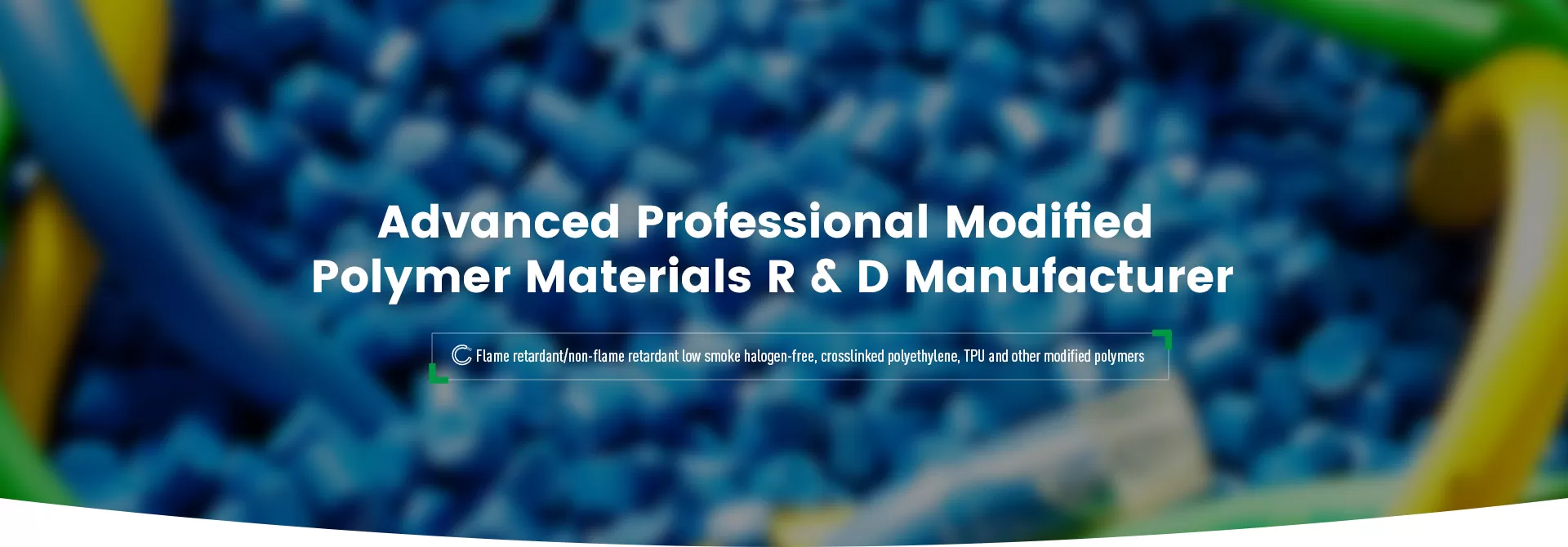
Cross-linked Polyolefin XLPO and Cross-linked Polyethylene XLPE both offer unique benefits for cable sheathing and insulation. This article explains the performance differences between the two materials and helps you choose the right one based on voltage level, flame resistance, and usage environment.
If you're a purchasing manager and unsure where XLPO or XLPE is used, the following examples will give you a clear picture of how these materials perform in real applications.
Automotive Wire Harnesses (High-Voltage Cables)
XLPO sheathing can handle continuous temperatures up to 125°C. It also has strong oil resistance (meeting ASTM D543) and can withstand over 100,000 bending cycles. It meets ISO 6722 low-smoke, halogen-free (LSZH) standards.
Solar PV Cables
XLPO sheaths can resist extreme temperatures from -40°C to +120°C and strong UV exposure. Silane cross-linked XLPO complies with TÜV 2PfG1169 and IEC 62930 LSZH standards.
Rail Transit Cable Sheaths (for trains, subways)
Meets EN 45545 HL2/HL3 (R15/R16) standards. Has an oxygen index (OI) over 28% and smoke density under 150%. Also oil- and wear-resistant, meeting EN 50363-10 standards.
Home Appliance Wiring
In UL 758 AWM 1015 models, XLPO can work long-term at 105°C–125°C. It avoids plasticizer migration and remains flexible over time.
Heat Shrink Tubing
Used for protecting sensors, batteries, and chassis wiring. Electron beam (EB) cured XLPO shrinks tightly at 120°C. It meets UL VW-1 flame resistance requirements.
Automotive HV/LV Wires & Ethernet Cables
XLPE can handle temperatures up to 150°C. It is halogen-free and eco-friendly. Suitable for cables that meet QC/T 1037, ISO 6722, and JASO D611 standards.
UL Electronic Wires
XLPE provides excellent insulation and flame resistance. It has a maximum temperature of 150°C and a Shore hardness of up to 98A. Suitable for UL758 and UL1581 electronic wire standards.
Semiconductive Shielding in Building Wiring
Used in medium-voltage power systems. The compound contains 30% gel content with a resistivity around 10Ω·cm, offering stable performance.
Medium/High Voltage Power Cable Insulation
XLPE (PE-Xa), cured by peroxide, can continuously run at 90°C and withstand 250°C short-term faults. It meets IEC 60811 and resists water treeing. Suitable for cables rated 30–500kV.
Submarine and Mining Cables
XLPE insulation offers great waterproofing, oil resistance, and wear protection. It can operate up to 20,000 hours in oil-based environments.
| Sector/Application | Preferred Compound | Key Advantage |
| Auto harness | XLPO/XLPE | Flex + oil + low smoke |
| solar PV cable | XLPO/XLPE | UV + temp cycling + LSZH |
| Rail Transit Cable | XLPO | Low smoke, zero halogen |
| Home Appliances | XLPO | Thin-wall + heat + flexibility |
| UL electronic wire | XLPE | Flame + HFFR |
| MV/HV insulation | XLPE | Water tree resistance + dielectric |
| Mining/subsea cable | XLPE/TPU | Deep pressure + chemical resistance |
XLPO: Best for low-voltage systems (≤1kV), with sheath or insulation working temperatures of 125°C–150°C.
XLPE: Suitable for medium (1kV–35kV) to high voltage (up to 500kV) systems, with ≥70% gel content for excellent electrical purity.
XLPO: Can continuously handle 125°C–150°C and up to 250°C for short peaks.
XLPE: Typically supports 90°C–125°C continuous temperatures.
XLPO is ideal for high-temperature, tight spaces, or repeated bending.
XLPE is better for high voltage and lower temperature applications.
XLPO: Meets LSZH standards like IEC 60332, IEC 61034, and IEC 60754. Fits CPR Euroclass, NFPA 130, and EN 45545 requirements.
XLPE: Base PE is not halogen-free. Needs additives to meet flame standards; commonly used in VW-1 rated outdoor or industrial settings.
XLPO: Strong resistance to oil, acid, and wear. Meets ASTM D543. Ideal for EV batteries, oily environments, or moving machinery cables.
XLPE: Good basic durability. For oily areas, TPU or EPDM is recommended for the sheath. Best for underground or shielded cables.
XLPE: Faster extrusion and better suited for insulation processing.
XLPO: More suitable where sheath precision and control are key.
XLPO: 10–30% more expensive per kg than XLPE but offers lower maintenance and fire-related downtime.
XLPE: Lower resin cost, mature supply chain, faster production speed—though it may need more repairs in sheath applications.
| Method | XLPO | XLPE |
| Cure Type | Silane, Radiation Crosslinking, Chemical Crosslinking | |
| Cure Control | Needs humidity / oven | Fast, known recipe |
| Line Speed | Slower | High throughput |
| Extruder Setup | May need jacket mod | Standard insulation lines |
| Parameter | XLPO Advantage | XLPE Advantage |
| Max Temperature | 125°C–150 °C continuous | 90 °C-125℃ continuous |
| Dielectric Use | Jacket-level insulation (≤1 kV) | Full insulation at 1–500 kV |
| Flame Code Compliance | LSZH ready, B2ca/HL3 compliant | VW-1/FR with smoke trade-off |
| UV / Oil Resistance | Strong with stabilizers | Moderate, needs jacket aid |
| Line Integration | Jacket lines with silane / EB options | |
| Lifecycle Cost | Higher upfront, lower fire loss risk | Lower upfront, higher over time |
Conclusion
Choosing between XLPO and XLPE depends on how and where the cable will be used:
For high temperatures, tight spaces, or environments requiring low smoke and halogen-free materials, XLPO is the better option thanks to its flexibility and clean-burning properties.
For insulating cables from 1kV to 500kV, XLPE is more cost-effective with strong electrical performance and fast production speed.
Need help selecting or customizing the right XLPO or XLPE compound?
We supply peroxide cross-linked, silane cross-linked, and electron beam cross-linked materials tailored for automotive wiring, solar cables, building wiring, UL-certified wires, and specialty industrial cables.